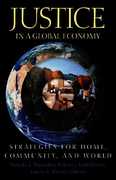Question
Jewel wants to take a course at a local college, but she would have to work three hours a week less to attend the class.
Jewel wants to take a course at a local college, but she would have to work three hours a week less to attend the class. That work is her only alternative to taking this course. Her opportunity cost of taking that course is:
Select one:
A.the cost of tuition she would have to pay.
B.the cost of tuition, textbooks, stationery and foregone wages.
C.the cost of tuition, textbooks and stationery.
D.the foregone wages.
Which of the following quotesbestillustrates the idea offixedcost?
Select one:
A."The amount I pay for the equipment rental remains the same even when I hire more workers."
B."Amount of raw materials that goes into each new unit of output does not change."
C."If I double the number of workers, I get only 80 percent more packages delivered."
D."As we increase output, wage per hour is fixed."
Monty runs a coffee shop in a medium-sized community where there are many such stands. Which of the following costs must she recover to stay open in the short run?
Select one:
A.Rent and prepaid insurance.
B.No costs: any revenue is better than no revenue.
C.All costs.
D.Cost of coffee and labour.
Assume market demand for a product remains stable (i.e. unchanging) over time. If the demand for the product is elastic, increasing price will ___________ total revenue.
Select one:
A.decrease
B.decrease, then increase
C.increase
D.not change
Which of the following characterizes a single-price profit maximizing monopolist's profit maximizing behaviour
Select one:
A.marginal revenue = price > marginal cost.
B.marginal cost = average cost > price.
C.marginal cost = marginal revenue < price.
D.marginal revenue = marginal cost = price.
At which combination of price and marginal revenue would the price elasticity of demand be inelastic?
Select one:
A.price equals $70, marginal revenue equals $10
B.price equals $50, marginal revenue equals $0
C.price equals $60, marginal revenue equals $5
D.price equals $40, marginal revenue equals -$5
Suppose a firm in a perfectly competitive market discovers that the price of its product is above its minimum AVC point but below ATC. Given this, the firm:
Select one:
A.maximizes profits by producing where MR = ATC.
B.should continue producing in the short run, but leave the industry in the long run.
C.should close down immediately.
D.minimizes losses by producing at the minimum point of its AVC curve.
The term "productive efficiency" refers to:
Select one:
A.fulfilling the condition P = MC.
B.any short-run equilibrium position of a competitive firm.
C.the production of a good at the lowest average total cost.
D.the production of the product-mix most desired by consumers.
If there are external benefits or positive externalities associated with the consumption of a good or service:
Select one:
A.the market demand curve will be the vertical summation of the individual demand costs.
B.the private demand curve will overestimate the true demand curve.
C.the private demand curve will underestimate the true demand curve.
D.consumers will be willing to pay for all these benefits in private markets.
Supply-side market failure
Select one:
A.arises when it is impossible to charge consumers what they are willing to pay for a product.
B.happens only when the quantity of a good demanded is less than that which is supplied.
C.exists in equilibrium with supply-side market failure.
D.arises in situations in which a firm does not have to pay the full cost of producing its output.
Assume that a firm's allocatively efficient output is 1 million units. Which of the following is true of the firm?
Select one:
A.Marginal benefit exceeds marginal cost for any output greater than 1 million.
B.Marginal cost exceeds marginal benefit for any output less than 1 million.
C.Marginal cost equals marginal benefit for any output greater than 1 million.
D.Marginal cost exceeds marginal benefit for any output greater than 1 million.
The two strategies that entrepreneurs in a perfectly competitive industry use in order to try to earn more than a normal profit are:
Select one:
A.the lowering of production costs and increasing sales of existing products.
B.the development of a totally new product and increasing sales of an existing product.
C.the lowering of production costs and the development of a totally new product.
D.to try to maintain the current production costs, while increasing sales of existing product.
What do economies of scale, the ownership of essential raw materials, and patents have in common?
Select one:
A.They are all barriers to entry.
B.They must all be present before price discrimination can be practiced.
C.They all help explain why the long-run average cost curve is U-shaped.
D.They all help explain why a monopolist's demand and marginal revenue curves coincide.
Step by Step Solution
There are 3 Steps involved in it
Step: 1

Get Instant Access to Expert-Tailored Solutions
See step-by-step solutions with expert insights and AI powered tools for academic success
Step: 2

Step: 3

Ace Your Homework with AI
Get the answers you need in no time with our AI-driven, step-by-step assistance
Get Started


